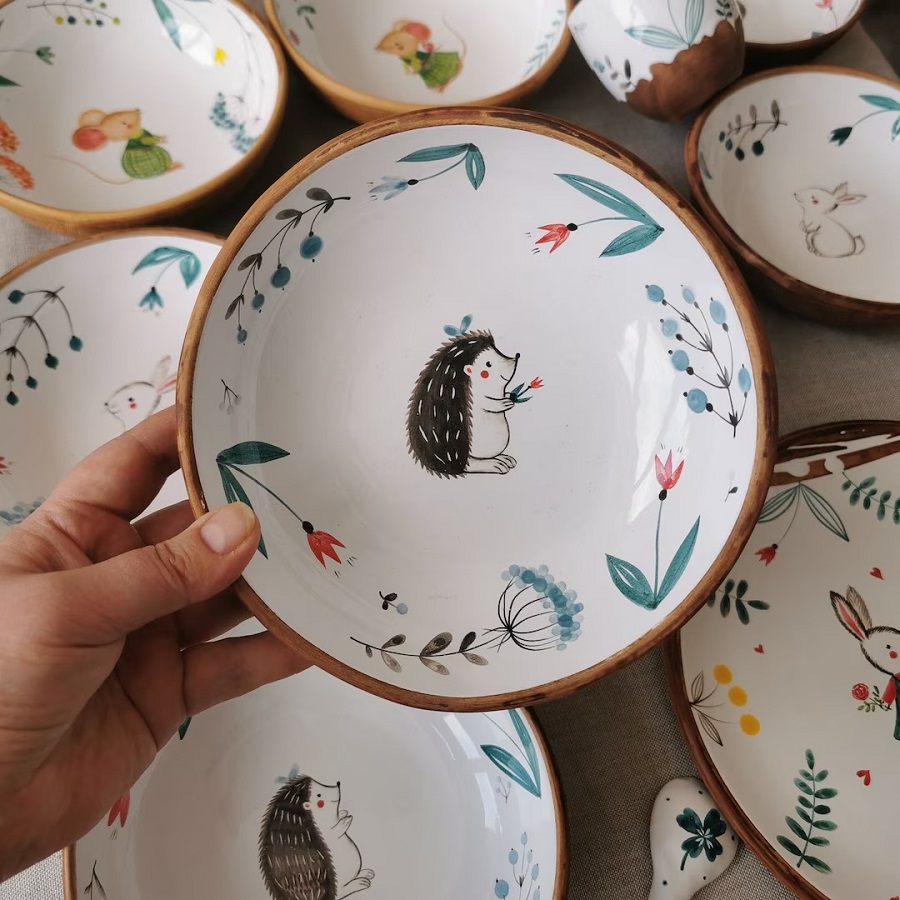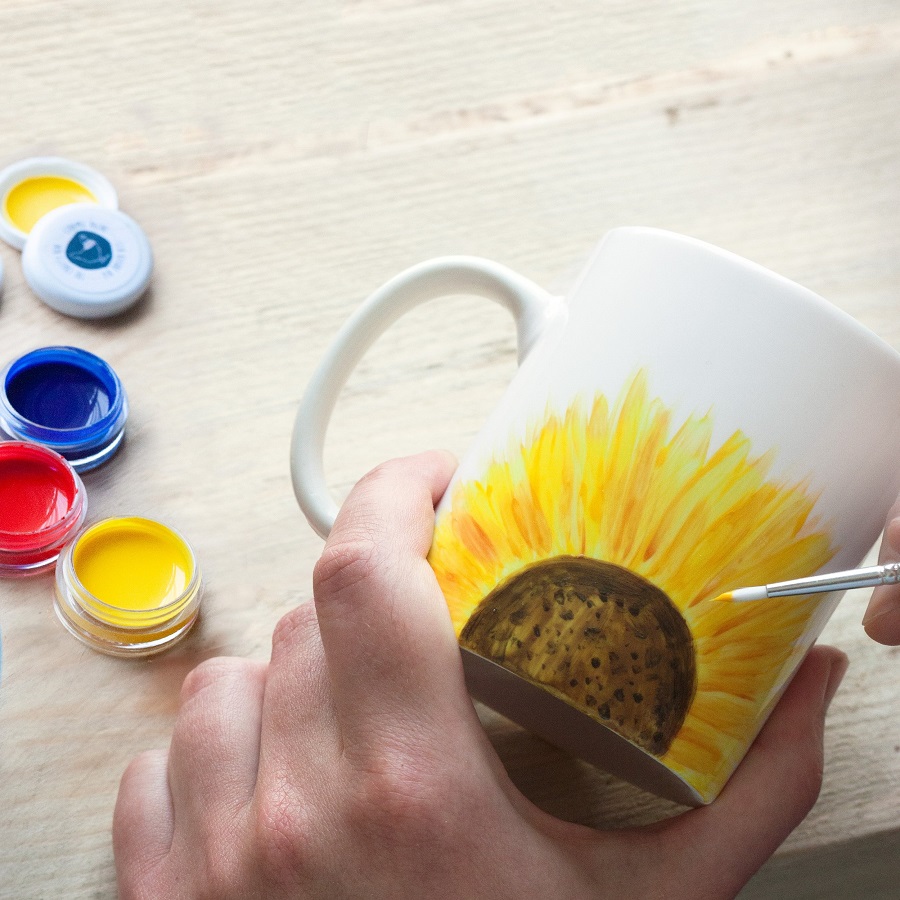Introduction to Ceramic Painting
What is Ceramic Painting?
Ceramic painting is a creative and engaging activity that involves decorating ceramic pieces, such as plates, mugs, figurines, and vases, with various paints and glazes. This art form has been practiced for centuries and continues to be a popular hobby and craft. The process typically involves selecting a pre-made ceramic piece, applying underglaze or acrylic paints, and then firing the piece in a kiln to set the colors and create a durable, glossy finish. Ceramic painting is not only a fun and relaxing activity but also a way to create personalized and meaningful gifts or home decor items.
Why is Ceramic Painting Popular Among Lovers?
Ceramic painting is a particularly appealing activity for couples and lovers for several reasons. First, it provides a shared experience that allows partners to spend quality time together, fostering a sense of connection and collaboration. Second, it offers a creative outlet where both individuals can express themselves and work on a project that reflects their personalities and relationship. Finally, the end result is a tangible and lasting memory that can be cherished for years to come. Whether it’s a date night activity or a special gift, ceramic painting is a unique and memorable way to bond and create something beautiful together.

Getting Started with Ceramic Painting
Materials and Tools Needed
To get started with ceramic painting, you will need a few essential materials and tools. These include:
- Ceramic Pieces: Choose from a variety of pre-made ceramic pieces, such as mugs, plates, bowls, or figurines. Many craft stores and ceramic studios offer a wide selection.
- Underglaze or Acrylic Paints: Underglaze paints are specifically designed for ceramics and are fired in a kiln to create a permanent, food-safe finish. Acrylic paints are an alternative for those who do not have access to a kiln, though they are not as durable.
- Brushes: A variety of brushes, including fine-tipped and broader brushes, will allow you to create detailed and varied designs.
- Sponges and Stencils: These can be used to add texture and patterns to your ceramic pieces.
- Kiln (if using underglaze): A kiln is necessary to fire the painted ceramic pieces and set the underglaze. Many ceramic studios offer kiln services for a fee.
- Clear Glaze (optional): Applying a clear glaze after the underglaze can enhance the colors and provide a smooth, glossy finish.
Finding a Suitable Workspace
Creating a suitable workspace is crucial for a successful and enjoyable ceramic painting experience. Here are some tips to set up your workspace:
- Choose a Clean, Well-Lit Area: Ensure that your workspace is clean and well-lit. Good lighting will help you see the details of your work and make it easier to apply the paint evenly.
- Protect Your Surface: Cover your work surface with a plastic sheet or newspaper to protect it from paint spills and stains.
- Organize Your Materials: Arrange your paints, brushes, and other tools within easy reach. This will help you stay organized and focused on your project.
- Create a Comfortable Seating Arrangement: Make sure you and your partner have comfortable seating, as ceramic painting can take several hours. Consider using adjustable chairs or stools to maintain a comfortable posture.
- Set the Mood: Add some soft music, candles, or other elements to create a relaxing and romantic atmosphere. This will enhance the overall experience and make it more enjoyable for both of you.

Step-by-Step Guide to Ceramic Painting
Preparing the Ceramic Piece
Before you begin painting, it’s important to prepare the ceramic piece properly:
- Clean the Ceramic: Use a damp cloth to wipe down the ceramic piece and remove any dust or debris. Allow it to dry completely.
- Apply a Base Coat (Optional): If you want a uniform background color, apply a base coat of underglaze or acrylic paint. This will serve as the foundation for your design. Allow the base coat to dry completely before proceeding.
- Sketch Your Design (Optional): Use a pencil to lightly sketch your design onto the ceramic piece. This can help you plan your composition and ensure that your design is balanced and symmetrical.
Applying the Paint
Once your ceramic piece is prepared, you can start applying the paint:
- Choose Your Colors: Select the colors you want to use for your design. Consider the overall theme and mood you want to create. For example, warm, vibrant colors can create a lively and energetic feel, while cool, pastel colors can create a calm and soothing atmosphere.
- Mix Your Paints (if needed): If you are using underglaze, you may need to mix the paints to achieve the desired shades. Follow the manufacturer’s instructions for mixing and diluting the paints.
- Start Painting: Begin by applying the base colors of your design. Use a broad brush for larger areas and a fine-tipped brush for details. Work in layers, allowing each layer to dry before applying the next. This will help prevent the colors from bleeding and ensure a clean, crisp design.
- Add Details and Texture: Once the base colors are dry, add details and textures to your design. Use a fine-tipped brush to add intricate patterns, dots, or lines. You can also use sponges and stencils to create interesting textures and effects.
- Blend and Shade (if desired): To create depth and dimension, you can blend and shade the colors. Use a slightly damp brush to blend the edges of the colors, creating a smooth transition. You can also add shading to give the design a more three-dimensional look.
Finishing Touches
After you have completed your painting, there are a few final steps to ensure a professional and polished finish:
- Allow the Paint to Dry: Let the paint dry completely. This can take several hours, depending on the thickness of the paint and the humidity of the environment.
- Apply Clear Glaze (if using underglaze): If you are using underglaze, apply a clear glaze over the painted area. This will enhance the colors and provide a smooth, glossy finish. Follow the manufacturer’s instructions for applying the glaze.
- Fire the Ceramic (if using underglaze): Take the painted ceramic piece to a ceramic studio or kiln service to be fired. The firing process will set the underglaze and create a permanent, food-safe finish. This step is not necessary if you are using acrylic paints.
Creative Ideas for Couples
Personalized Mugs
One of the most popular ceramic painting projects for couples is creating personalized mugs. Each partner can design a mug for the other, incorporating inside jokes, meaningful symbols, or heartfelt messages. For example, you could paint a heart with both of your initials, or create a design that represents a shared interest or hobby. Personalized mugs are not only a thoughtful gift but also a practical one, as they can be used every day.
Matching Plates or Bowls
Another fun idea is to create matching plates or bowls. Each partner can design a plate or bowl that complements the other’s, creating a cohesive and harmonious set. You could choose a common theme, such as a favorite flower or a specific color palette, and each person can add their own unique touches. Matching plates or bowls can be used for special occasions, like anniversaries or date nights, and they serve as a beautiful reminder of your shared creativity and love.
Decorative Vases
Decorative vases are another great option for couples. You can create a vase that reflects your personal style and adds a touch of elegance to your home. Choose a simple, elegant shape and paint it with a design that holds special meaning for both of you. For example, you could paint a scene from a memorable vacation or a pattern that symbolizes your relationship. A hand-painted vase can be filled with fresh flowers or displayed as a standalone piece of art.
Figurines and Sculptures
For a more artistic and challenging project, consider painting figurines or small sculptures. These can be anything from animal figures to abstract shapes. Each partner can choose a figurine that resonates with them and paint it in a way that reflects their personality. Figurines and sculptures can be displayed on a shelf or mantel, serving as a unique and personal decoration. They also make wonderful gifts, as they are a tangible representation of your shared creativity and love.

Tips for a Successful Ceramic Painting Experience
Communication and Collaboration
Effective communication and collaboration are key to a successful ceramic painting experience. Before you start, discuss your ideas and plans with your partner. Decide on a theme or concept that you both like and agree on the roles and responsibilities. For example, one person might handle the base colors, while the other focuses on the details. Regularly check in with each other to ensure that you are both happy with the progress and direction of the project. This will help prevent any misunderstandings and ensure that the final result is a true reflection of your partnership.
Patience and Practice
Ceramic painting requires patience and practice. It can be tempting to rush through the process, but taking your time and working carefully will result in a better and more satisfying outcome. If you are new to ceramic painting, start with a simple project and gradually work your way up to more complex designs. Practice different techniques, such as blending, shading, and using stencils, to develop your skills and confidence. Remember that mistakes are part of the learning process, and they can often lead to unexpected and beautiful results.
Embrace Imperfections
Perfection is not the goal of ceramic painting. In fact, the imperfections and unique touches are what make each piece special and personal. Embrace the small mistakes and quirks, as they add character and charm to your work. If a mistake occurs, try to incorporate it into your design or find a way to turn it into a feature. For example, a misplaced dot can become the center of a flower, or a smudge can be turned into a shadow. The most important thing is to enjoy the process and have fun with your partner.
Document the Process
Documenting the ceramic painting process can be a wonderful way to capture the memories and emotions of the experience. Take photos or videos of the different stages of the project, from the initial sketches to the finished product. You can also write down your thoughts and reflections in a journal or blog. This documentation will serve as a beautiful and meaningful keepsake, reminding you of the time and effort you put into creating something special together.
Conclusion
Summary of Key Points
In summary, ceramic painting is a delightful and rewarding activity that offers a unique and creative way for couples to bond and express themselves. By understanding the basics of ceramic painting, gathering the necessary materials, and setting up a suitable workspace, you can create a memorable and enjoyable experience. Following a step-by-step guide and exploring creative ideas, such as personalized mugs, matching plates, decorative vases, and figurines, can help you produce beautiful and meaningful pieces. Effective communication, patience, and embracing imperfections are essential for a successful and fulfilling ceramic painting session.
Final Thoughts: Creating Lasting Memories
Ceramic painting is more than just a craft; it is a way to create lasting memories and deepen your connection with your partner. The process of working together, sharing ideas, and bringing a design to life is a powerful and intimate experience. The finished pieces serve as tangible reminders of your shared creativity and love, and they can be cherished for years to come. Whether you are looking for a fun date night activity or a special gift, ceramic painting is a must-do activity for lovers. So, gather your materials, set up your workspace, and let your creativity flow. Happy painting!